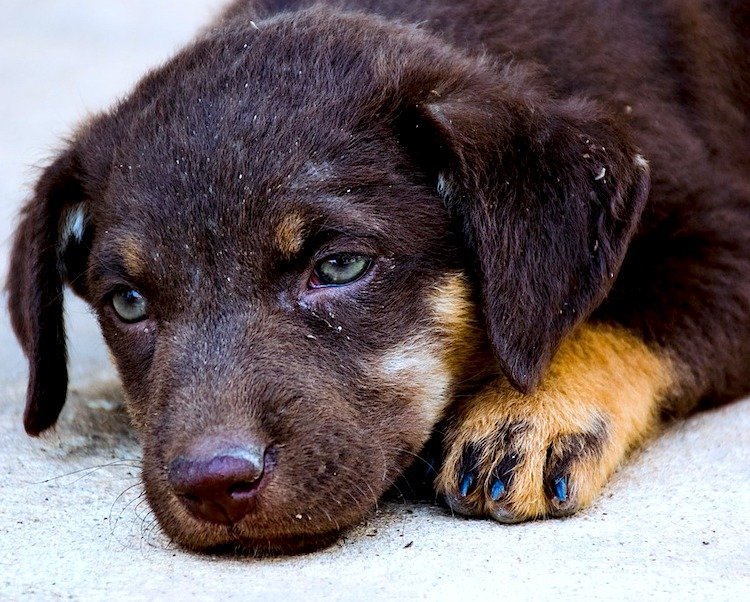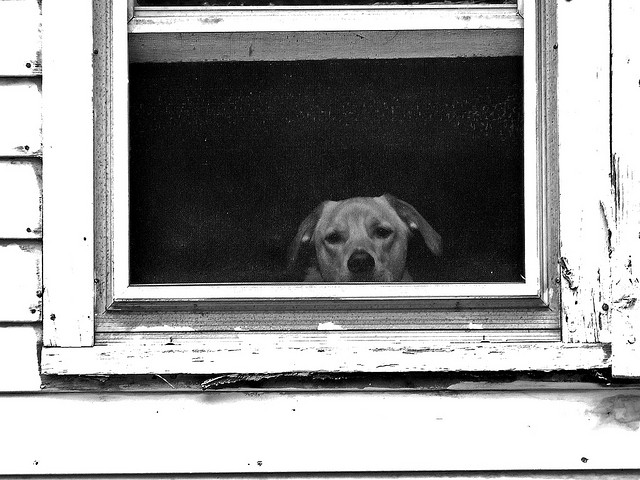
Rabies is not a pleasant topic, but you need to take it seriously if you have a pet.
Still a worldwide threat, rabies today kills approximately 59,000 people a year, mostly in Africa and Asia. And many, many more animals are infected.
Because of dedicated pet parents in the United States who take vaccination seriously and a government that controls stray populations and funds animal control, rabies is a very rare occurrence in this country.
- Currently there are only up to around 3 human rabies cases reported each year in the United States.
- Confirmed rabid dog cases number 60–70.
- More than 250 cats are reported rabid each year.
According to the Centers for Disease Control and Prevention, most of the dog and cat rabies cases were unvaccinated animals that became infected from rabid wildlife such as raccoons, skunks and bats. Americans are usually infected by a bat bite or when bit by a rabid animal while traveling overseas.
Before 1960, dogs were a common reservoir of rabies in the United States. Since the 1970s, rabies in humans and pets in the country has continued to decline due to animal control and vaccination programs, successful outreach programs, and advanced rabies protocols for pre- and post-exposure.
Vaccinating your pet against rabies in compliance with your state’s guidelines is the most important step you can take in keeping the spread of rabies in check. The elimination of dog-to-dog transmission of rabies in the United States, largely through a mandatory vaccination program, is one of the most important public health successes of the 20th century.
In countries where rabies is still not controlled, 99% of human deaths from it are caused by a bite from a rabid dog. Sadly, around 40% of these deaths are children.

What Is Rabies?
Rabies is a zoonotic disease, meaning it can be spread from animals to humans.
A preventable viral disease most often transmitted through the bite of a rabid animal, the rabies virus infects the central nervous system of mammals, quickly causing fatal disease in the brain. Once symptoms are evident, rabies usually causes death in 7–10 days.
If immediate medical attention is sought once a human or vaccinated animal is bitten, rabies can be prevented in almost 100% of cases.
Again, most human cases of rabies in the United States are caused by a bat bite or scratch. Because the exposure may seem so minimal, people who have died from rabies did not realize they had been bitten and did not seek immediate help.
Signs and Symptoms of Rabies
After a bite or exposure to rabies, the rabies virus does not cause any symptoms until it travels to the brain. From the bite to the appearance of symptoms is called the incubation period. This can take weeks to months.
Once symptoms appear, death is usually quick.
If your veterinarian believes your pet may have been exposed to rabies, the vet is required to place a quarantine on your pet as mandated by local and state protocols. If your animal is up to date on rabies vaccination, the quarantine is usually shorter.
Initial Phase
Initial symptoms of rabies in dogs, cats, other pets and even people are flu-like, including:
- General weakness
- Malaise
- Fever
- Headache
- Local itching or discomfort at the site of the bite
Then, acute signs of brain dysfunction appear. The animal or person may exhibit:
- Restlessness
- Apprehension
- Aggression
- Shyness
- Irritability
- Unusually docile behavior in an active animal
- Biting or snapping
Progression of Signs and Symptoms
As the virus infects the spinal cord and brain, a bizarre array of signs can appear:
- Heightened sensitivity to light, touch or sound
- Slack jaw
- Difficulty swallowing
- Heavy breathing
- Choking
- Eating unusual items
- Paralysis of the hind legs
- Staggering
- Loss of throat control
- Foaming at the mouth
- Disorientation or lack of coordination
- Loss of appetite
- Weakness
- Fear of water
- Trembling
- Dilated pupils
- Seizures
- Paralysis
- Death
Got a Pet? Take Rabies Seriously.
As a veterinarian, it’s my job to talk about rabies with pet parents every day.
Was YOUR Pet Food Recalled?
Check Now: Blue Buffalo • Science Diet • Purina • Wellness • 4health • Canine Carry Outs • Friskies • Taste of the Wild • See 200+ more brands…

If there’s any controversy with a client about administering a rabies vaccine to their pet, it’s usually due to finances or fear of vaccination side effects.
Most vets keep the price of rabies vaccination very reasonable. If you feel the price of a rabies vaccination is too high, you can often get your pet an inexpensive rabies vaccine at a rabies clinic in your town or a vaccination clinic.
Rabies vaccination is one of the safest vaccines out there for your pet. They also have to be given infrequently, usually only once every 3 years.
If your pet comes home with a bite wound of unknown origin or is in a fight with another domestic pet and you don’t know the rabies status of the other animal, you should get your pet’s rabies vaccine boosted and follow all other instructions from your vet.
Outdoor cats, for example, often come home with bite wounds. There is always a chance this bite could have come from a rabid animal. Indoor cats have been known to come in direct contact with a rabid bat in the house.
If your cat is up to date on rabies vaccination and you seek veterinary attention to get the wound treated and the rabies boosted, your pet will not develop rabies.

Rabies Is Preventable
When a human thinks he or she might have been bitten by a rabid animal, panic sets in.
There is no need for panic, but you need to see your healthcare provider quickly. Your physician will determine if the exposure warrants treatment with a series of rabies vaccines and another shot called rabies immune globulin.
Veterinarians and others at high risk for rabies exposure receive a rabies vaccination just like your dog or cat. If, however, a vaccinated person is exposed to rabies, he or she must receive some post-exposure vaccines. This happened to me, and I can tell you it’s not so bad.
As the local animal inspector for my town, I was required to remove the head of any suspect rabid animal and send that head off to the state for rabies testing.
One summer, after a full day at work, the police brought me a dead raccoon and asked me to send it to the state. While decapitating the poor dead beast, I inadvertently put the bloody scalpel through my surgical glove and cut my hand. In 2 days, the state report confirmed that the raccoon was indeed rabid.
Although I washed the wound for the required time and had been previously vaccinated, I went ahead with the post-exposure vaccines and was grateful for our country’s excellent rabies protection protocols.
For more information on rabies in dogs, watch this quick video from Dr. Katy Nelson, DVM:

Final Thoughts: Please Take Rabies Vaccination Seriously
Those of us with dogs and cats are the first line of defense in keeping our pets and ourselves safe from rabies. Please vaccinate your pets in accordance with your state guidelines and your vet’s recommendation.
Keeping your pet up to date on rabies can save you a lot of heartache in 2 specific situations:
- If your pet bites another pet or a human, you must provide proof of rabies vaccination to medical professionals and local animal control officers. If your pet is not up to date, the animal will be placed under quarantine.
- If your pet comes home with a bite wound of unknown origin and is not vaccinated, you will have to deal with the quarantine issue.
In my library of animal books, Rabid: A Cultural History of the World’s Most Diabolical Virus comes to mind.
Tracing the history of the rabies virus from ancient times to the present, this book notes that evil incarnate has often been expressed as a wild canid, whose bite transforms its victim into a delirious, inhuman creature.
That, in a nutshell, is the path of the rabies virus.
References
- “Take a Bite Out of Rabies!” Centers for Disease Control and Prevention. 2019. https://www.cdc.gov/features/rabies/index.html.
- “Human Rabies.” Centers for Disease Control and Prevention. 2019. https://www.cdc.gov/rabies/location/usa/surveillance/human_rabies.html.
- “US Declared Canine-Rabies Free.” Centers for Disease Control and Prevention. Sept. 7, 2007. https://www.cdc.gov/media/pressrel/2007/r070907.htm.
- “Education Is Vital to Prevent Rabies Deaths.” World Health Organization. Sept. 26, 2018. https://www.who.int/news-room/feature-stories/detail/education-is-vital-to-prevent-rabies-deaths.
- WHO Expert Consultation on Rabies: First Report. World Health Organization. 2014. https://www.who.int/rabies/ExpertConsultationOnRabies.pdf.
- Davis, Benjamin M., et al. “Everything You Always Wanted to Know About Rabies Virus (But Were Afraid to Ask).” Annual Review of Virology 2 (2015): 3.1–3.21. https://www.researchgate.net/publication/281229290_Everything_You_Always_Wanted_to_Know_About_Rabies_Virus_But_Were_Afraid_to_Ask.
- “What Is a Zoonotic Disease? Understanding This Public Health Concern.” St. George’s University. March 1, 2019. https://www.sgu.edu/blog/veterinary/what-is-a-zoonotic-disease/.
- “Frequently Asked Questions About Rabies for the General Public.” World Health Organization. 2018. https://www.who.int/rabies/Rabies_General_Public_FAQs_21Sep2018.pdf?ua=1.
- “The Path of the Rabies Virus.” Centers for Disease Control and Prevention. 2017. https://www.cdc.gov/rabies/transmission/body.html.
- “Rabies Facts & Prevention Tips.” American Humane. Aug. 25, 2016. https://www.americanhumane.org/fact-sheet/rabies-facts-prevention-tips/.
- “Caring for a Client’s Animal That May Have Been Exposed to Rabies.” Centers for Disease Control and Prevention. 2011. https://www.cdc.gov/rabies/specific_groups/veterinarians/potential_exposure.html.
- “Rabies Immune Globulin (Intramuscular Route).” Mayo Clinic. 2020. https://www.mayoclinic.org/drugs-supplements/rabies-immune-globulin-intramuscular-route/description/drg-20065738.
 This pet health content was written by a veterinarian, Dr. Debora Lichtenberg, VMD. This article was originally published in 2012 and is regularly updated. It was last reviewed for accuracy and updated Jan. 28, 2020.
This pet health content was written by a veterinarian, Dr. Debora Lichtenberg, VMD. This article was originally published in 2012 and is regularly updated. It was last reviewed for accuracy and updated Jan. 28, 2020. 

